Choosing a “warm floor” system for laying under the carpet - a comparative review
Underfloor heating systems have long established themselves as practical heating devices that significantly increase the comfort of the floor surface. Ideal finishes for them are thin, durable materials with low thermal insulation. For example, ceramic tiles, porcelain tiles, laminate. In this case, the energy consumption of the heating system will be minimal and, accordingly, its efficiency will be greater. But what if you want to lay underfloor heating in the nursery? Naked laminate, and especially tile, are not the best options. If the children are small and often play on the floor, then God himself ordered that a carpet or carpet be laid on it. Are these materials combined with heating systems? And if so, what kind of underfloor heating under the carpet or carpet to choose?
Content
There is a contact! A bit about compatibility
Carpet is an excellent heat insulator and the beliefs of some skeptics who argue that heating systems under such a coating will work very badly are built on this axiom. The generated heat, having encountered a heat insulator-carpet on the way, will leave along the path of least resistance. That is, down to the rough floor or to floors. At the same time, it will not be your apartment that will be heated, but the room below: the neighboring "apartments" or even a crude cold basement. There is a grain of truth in this opinion.
Indeed, any carpet or carpet has thermal insulation properties. And to a greater extent they depend on the thickness of the material. Thin tufted carpet in its heat-insulating properties does not go far from the laminate on a polyethylene substrate. Therefore, to be afraid that a correctly selected carpet “eats” all the heat is wrong. In addition, in order to reduce heat loss in the lower layers of the floor, another heat insulator, usually a foil film, is placed under the heating system during installation.
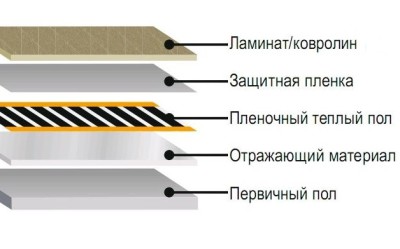
Unfortunately, in order to get the same heat on the surface of the heated carpet that you are used to feeling on the tile, you will have to increase the temperature on the thermostat by 3-5 ° C. Well, the comfort that you get from a soft and at the same time warm floor is worth it!
Warm floor and carpet: the choice of the optimal tandem
Now let's talk about the most important thing: what warm floor to choose under the carpet.
1. Water floor heating
A water floor is a system of pipes through which water circulates, heated by electricity or heating. This leads to a restriction on the use of such underfloor heating in urban apartments in which there is only central heating. Do not connect water floors to batteries! Another thing is if you live in a private house with autonomous heating. Then no one will forbid you to use water floors under the carpet.
Advantages of the water floor:
- gradual heating.This is very important for carpets, which (especially if they are of poor quality!) Can deform or creep during sudden temperature jumps;
- impossibility of burnout. Water in the underfloor heating pipe system is in constant motion, therefore, overheating zones can not occur on the carpet leading to burnout of the material.
Disadvantages:
- installation complexity;
- raising the floor level by 10-15 cm due to the screed.
Topic article: Water heated floor: a detailed analysis of installation systems and examples of DIY installation
2. Electric underfloor heating
The electric underfloor heating is heated thanks to the cable that conducts electricity. Unlike water, an electric floor can be mounted in any premises, and independently, without the involvement of specialists.
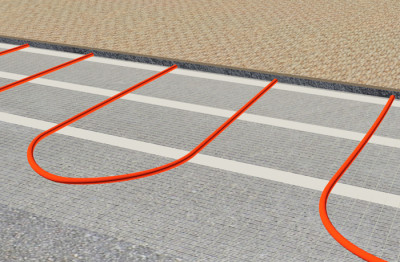
Advantages of the electric floor:
- uniform warming up. This reduces the possibility of carpet deformation;
- the ability to adjust the temperature. Knowing that the carpet cannot be heated above 27-30 ° C, put this restriction on the thermostat. The floor will heat up to this temperature and will be maintained automatically;
- ease of installation.
Disadvantages:
- fast heating. A rapid increase in the temperature of the carpet leads to spoilage, wear and a decrease in strength;
- the occurrence of overheating zones (for example, in places where the floor touches furniture legs), leading to the gradual burning out of the carpet and damage to the heating cable.
- high power consumption.
Topic article: Electric cable underfloor heating system: from component selection to first start-up
3. Infrared floor heating
The infrared floor is a type of electric heating systems, but, thanks to its unique properties, it is included in a separate group. The infrared floor is sold in the form of rolls of double-sided film, inside of which there are heating elements - graphite strips. After connecting to electricity, the strips begin to heat up, and then emit infrared (thermal) rays and heat up the finish flooring.
Advantages of the infrared floor:
- uniform heating, eliminating carpet deformation;
- sparing infrared radiation, minimizing the possibility of overheating and burnout of the carpet;
- surface temperature control with a thermostat;
- ease of installation and operation;
- minimum power consumption.
There is only one drawback - a relatively high price.
Since this option is used most often - we enclose a video instruction for its installation:
4. Mobile underfloor heating
All "classic" varieties of underfloor heating are stationary, requiring more or less complicated installation. But this is not always advisable. For example, in a rented apartment. Or then, when there is no need for heating the entire floor in the room, but only a small warm area is needed. Then, instead of stationary structures, you can purchase a mobile version.
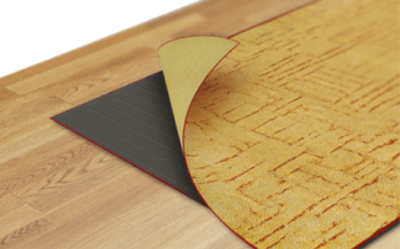
Mobile underfloor heating is an infrared heating film that does not require installation and is connected to the outlet using the supplied cord. A carpet that fits the size is placed on top of the spread film, the device connects to an outlet and after a few minutes heats up to the required temperature. Floor heating under the carpet is ready! At the same time, you did not spend time, effort, or a lot of money.
Advantages of mobile underfloor heating:
- original purpose for carpets.If stationary underfloor heating involves finishing them with different options, then for the mobile floor, the manufacturer chose only one solution - carpet. This means that the temperature conditions and the method of heating the mobile underfloor heating will not be able to harm your carpet;
- the ability to set the appropriate temperature using the power controller;
- the ability to choose the size of the warm floor under the existing carpet;
- convenience in carrying;
- film underfloor heating under the carpet does not need to be mounted, it is enough to spread it on the floor and connect it to a power outlet;
- profitability, low power consumption.
Here is an example of such a system:
Making the final choice
Judging by the characteristics of the above options, we can draw the following conclusions:
- The optimal type of heating systems for carpeting are infrared warm floors. They are characterized by the most gentle heating mode, which can be controlled using a thermostat. In addition, and this is important, cement screed does not need to be poured over infrared films, which means that the already rather big heat-insulating properties of the finish coating (carpet) will not be enhanced.
- for temporary heating in cottages or in rented housing, modern heating mats or films - mobile heated floors - will be a good option. They can be moved to any place, quickly laid out and dismantled.
- if you live in a private house with autonomous heating, you are not afraid of the complicated installation of pipes and you want to walk on a soft surface - make water-heated floors and cover them with carpet. Circulating water contributes to the soft heating of the carpet, in which the operational properties of the material are not lost.
- electric underfloor heating is not the best choice. It quickly heats up, possible zones of overheating, damage to the cable and carpet.
That's all for today - if you have questions, welcome in the comments!

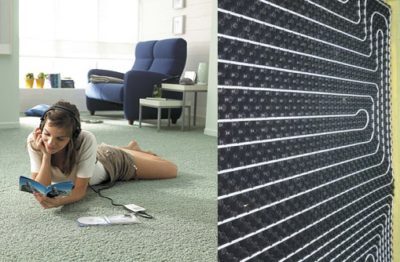
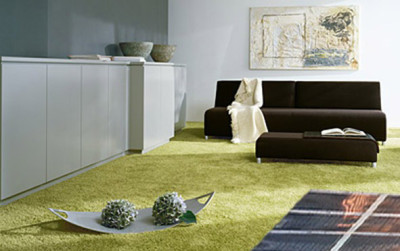

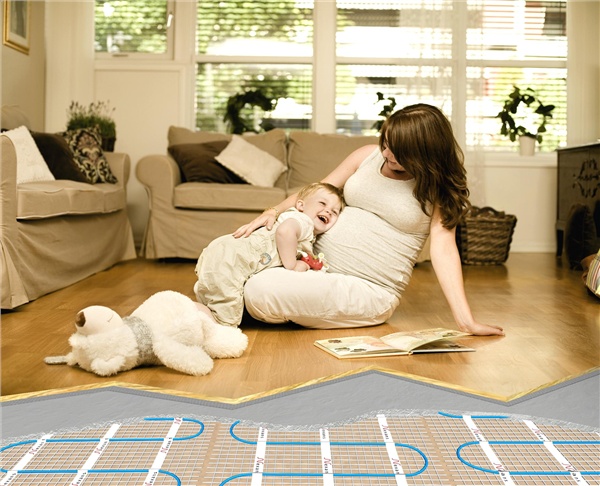
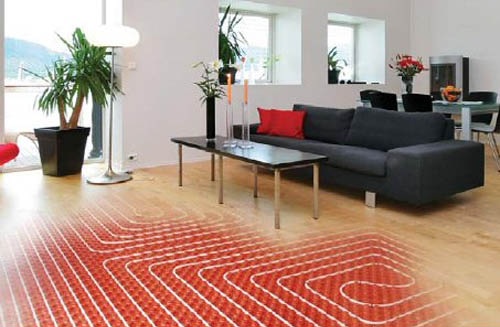
3 comments